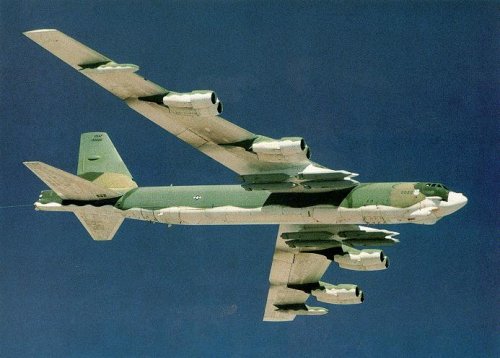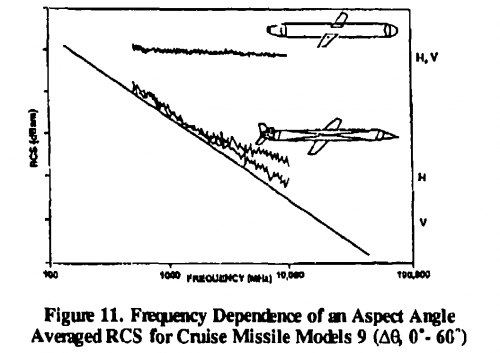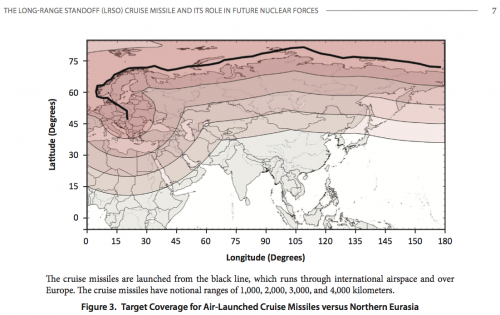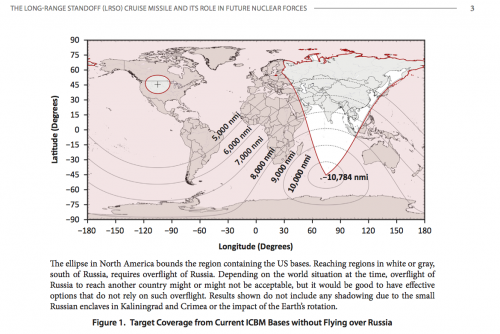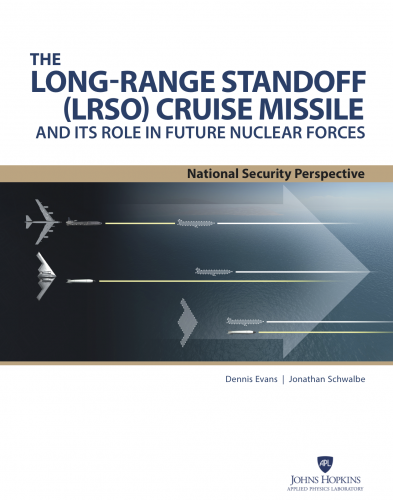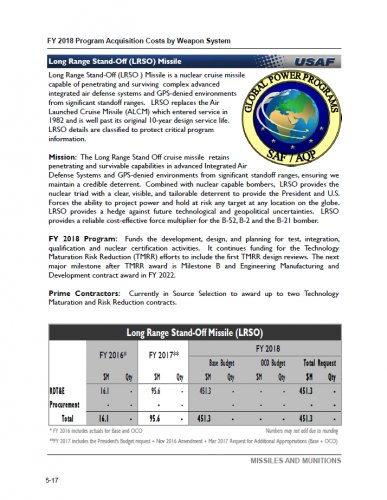- Joined
- 21 April 2009
- Messages
- 13,566
- Reaction score
- 7,193
Pentagon Eyes More Than $800 Million for New Nuclear Cruise Missile
Tuesday, March 9, 2010
By Elaine M. Grossman
WASHINGTON -- The U.S. Air Force plans to spend more than $800 million to build a new nuclear-armed cruise missile for its bomber aircraft, according to little-noticed details buried inside the Obama administration's fiscal 2011 budget request delivered last month to Capitol Hill (see GSN, Dec. 16, 2009).
A "Follow-on Long-Range Stand-off Vehicle," or LRSO for short, would replace 375 aging AGM-86B Air Launched Cruise Missiles, expected to retire from the fleet by 2030. The Defense Department has estimated the new effort could cost a total $1.3 billion, Global Security Newswire has learned.
"The current system is experiencing obsolescence of parts [and] components," the Air Force stated in one budget document. "Missile components and support equipment are becoming non-supportable."
The service is closely monitoring "critical components" -- such as the missile's fuse, guidance and electrical power systems -- for age-related malfunctions, according to the text. It calls a service life extension of the Air Launched Cruise Missile "essential" to meeting war-plan requirements.
At the same time, the Air Force is conducting an "analysis of alternatives" aimed at weighing technical options for replacing the AGM-86B, which was first deployed in 1982. The document shows that the Pentagon is expected to make a formal acquisition decision around October 2012 on how to proceed.
The budget documents indicate a service intention to sharply ramp up research-and-development funds for the nuclear-capable weapon between fiscal 2013 and 2015, culminating in an estimated half-billion dollars to be spent on the LRSO effort in fiscal 2015 alone.
For the near term, though, the Air Force is requesting $3.63 million in 2011 to complete the ongoing technical studies on the new cruise missile.
Inclusion of the funds in the White House budget request is sure to rankle lawmakers on the left flank of President Barack Obama's political base, who have supported his commitment to taking "concrete steps" toward the eventual global elimination of nuclear weapons. Obama laid out this vision in a major speech last April in Prague, an event frequently cited as helping him win a Nobel Peace Prize.
On the other side of the aisle, Republicans can be expected to welcome the cruise missile plans as a potential indication of the administration's intent to modernize the U.S. nuclear arsenal. The Senate's entire GOP contingent in December told Obama that their support for the president's arms control agenda would rest on his commitment to funding modern replacements or updates for U.S. nuclear weapons (see GSN, Dec. 17, 2009).
Today's Air Launched Cruise Missiles are launched from the B-52 bomber, which is slated to remain in service through 2040. The aircraft can carry six cruise missiles under each of its wings and eight internally on a rotary launcher, giving each B-52 a capacity of 20 missiles.
The cruise missile flies roughly 550 mph and has a range of more than 1,500 miles, allowing the bomber to stand off at a safe distance from its target.
Though a future LRSO weapon's capabilities have not yet been publicly defined, a new cruise missile might be expected to ride aboard either a B-52 bomber or a future Long-Range Strike aircraft, which could be manned or unmanned (see GSN, Dec. 18, 2009).
Whether the future bomber itself proceeds -- and on what time line -- is uncertain. It is also not known yet if a new aircraft would be nuclear-weapon capable, like today's B-52 and B-2 planes, or instead be limited to conventional missions, like today's B-1 bomber.
The Defense Department is expected to announce its plans for a future Long-Range Strike aircraft as part of a major Nuclear Posture Review. The congressionally directed review of atomic forces, strategy and readiness has been repeatedly delayed but is anticipated for release in the coming weeks (see GSN, March 1).
Air Force budget documents for the first time include a funding line item for development of the new bomber. Budget dollars for the aircraft rise on a schedule roughly parallel to the proposed new cruise missile. The service expects to fund the new bomber at nearly $200 million in fiscal 2011, with program expenditures totaling $1.74 billion through 2015.
The service has not revealed exactly how it would use these large sums over that period or when bomber production would begin. Nor has the Air Force officially divulged a total program cost estimate for the proposed new bomber or an LRSO cruise missile.
The documents submitted to Congress on Feb. 1 state that Air Force studies on how to maintain the Air Launched Cruise Missile "identified system components that cannot be sustained beyond the initial missile service life," but that date has long since passed.
When the missile first entered the fleet in 1982, its service life was expected to be 10 years, according to a Pentagon official's response to written questions from Global Security Newswire. In 1998 -- six years after that anticipated retirement date -- the Air Force began a "service life extension program."
Current expectations are that "the Air Launched Cruise Missile will be retained through FY-20 with an option through FY-30," the official said in an e-mailed response, released on condition of anonymity. "Presently, ALCM is mission-ready and sustainable through 2030."
At the same time, the Defense Department appears to be leaving open the possibility that some of the first cruise missiles to enter the force might encounter age-related malfunctions prior to 2030.
"The ALCMs will age out as limited life components fail," the Pentagon official stated, without offering specifics. "Additional future investment and [service life extension program] actions would determine the actual time frame for obsolescence."
To keep the bomber leg of the nuclear triad useful and viable in the years to come, the Air Launched Cruise Missile must be replaced with a new weapon that offers similar stand-off launch capability, according to Christopher Ford, a senior fellow at the Hudson Institute.
"You don't want to fly B-52s over anything but tribal militias these days. That's a good way to lose B-52s," he said in an interview last week, suggesting the bombers are increasingly vulnerable to advanced surface-to-air missile technologies. "Hence we need a stand-off capability."
In fact, without a nuclear cruise missile, the utility of the bomber leg of the triad could significantly decline and eventually disappear, according to some issue experts. Lacking an ALCM replacement, the Pentagon could ultimately convert all its bombers to solely conventional use, leaving the nation with a "dyad" of submarine-launched ballistic missiles and ICBMs, insiders say.
Ford commended the Obama team for taking steps to ensure that key facets of the nuclear arsenal remain viable into the long term, even if that means alienating liberals in the White House's political base.
"This would be an interesting wrinkle that the Obama administration is at least contemplating modernizing nuclear delivery systems," Ford said. "The United States has been the only major world power not modernizing its delivery systems."
Others argue there is no urgent need for Washington to modernize its nuclear delivery platforms because they remain quite capable today and could continue functioning reliably for years to come.
"I think the president has quite clearly said no new nuclear weapons," said Hans Kristensen, who has closely tracked annual funding for a cruise missile replacement. Though liberal and conservative pundits alike tend to focus on whether and how nuclear warheads are modernized, "a nuclear warhead won't have much effect without a delivery platform," he said.
Kristensen, director of the Federation of American Scientists' Nuclear Information Project, said that even if the Nuclear Posture Review envisions a continued role for a nuclear-armed bomber for the time being, funding the future cruise missile would seem to "fly in the face of the president's pledge."
"Who are we kidding?" he said in an interview last week. "We're telling the world we're not going to produce new nuclear weapons, and in the first budget of the administration there is a new nuclear weapon."
In fact, the Pentagon official also would not rule out the possibility that a replacement cruise missile could carry a warhead other than the W-80, which is fitted on today's Air Launched Cruise Missile and on the Navy's Tomahawk Sea-Launched Cruise Missile. The latter weapon system is widely expected to retire soon from the U.S. arsenal (see GSN, Feb. 22).
The Air Force suspended an effort to extend the service life of the W-80 warhead in fiscal 2006, deferring work to what the Bush administration at that time anticipated would be a multiservice Reliable Replacement Warhead. The pause in the W-80 overhaul also allowed the nuclear complex to initiate a life-extension effort on another warhead, the Navy's W-76 weapon, the Pentagon official said.
Though Congress ultimately eliminated the RRW effort -- citing concerns that the new warhead could undermine Washington's nonproliferation objectives -- work to refurbish the W-80 has not resumed, according to the Defense Department.
The service has "archived" its previously conducted study of W-80 life-extension options, pending a "possible late FY-11 restart decision," according to the Pentagon official.
"While the W-80 is an obvious candidate" for use in a weapon that replaces the Air Launched Cruise Missile, "the LRSO study will help inform that decision," the official said.
Should the W-80 remain in the U.S. arsenal, it is likely to require another major life extension beginning in the 2030 time frame -- just as the last Air Launched Cruise Missiles retire -- according to a 2008 planning document compiled by the Energy Department's National Nuclear Security Administration.
That document, obtained by GSN, shows initial studies beginning late in fiscal 2029 and overhaul work on the nuclear explosive package and firing set commencing in 2036.
==============================================================================================
Now I'm just waiting for "New ICBM to be Funded" and "New Nuclear Weapons to be Funded"
Tuesday, March 9, 2010
By Elaine M. Grossman
WASHINGTON -- The U.S. Air Force plans to spend more than $800 million to build a new nuclear-armed cruise missile for its bomber aircraft, according to little-noticed details buried inside the Obama administration's fiscal 2011 budget request delivered last month to Capitol Hill (see GSN, Dec. 16, 2009).
A "Follow-on Long-Range Stand-off Vehicle," or LRSO for short, would replace 375 aging AGM-86B Air Launched Cruise Missiles, expected to retire from the fleet by 2030. The Defense Department has estimated the new effort could cost a total $1.3 billion, Global Security Newswire has learned.
"The current system is experiencing obsolescence of parts [and] components," the Air Force stated in one budget document. "Missile components and support equipment are becoming non-supportable."
The service is closely monitoring "critical components" -- such as the missile's fuse, guidance and electrical power systems -- for age-related malfunctions, according to the text. It calls a service life extension of the Air Launched Cruise Missile "essential" to meeting war-plan requirements.
At the same time, the Air Force is conducting an "analysis of alternatives" aimed at weighing technical options for replacing the AGM-86B, which was first deployed in 1982. The document shows that the Pentagon is expected to make a formal acquisition decision around October 2012 on how to proceed.
The budget documents indicate a service intention to sharply ramp up research-and-development funds for the nuclear-capable weapon between fiscal 2013 and 2015, culminating in an estimated half-billion dollars to be spent on the LRSO effort in fiscal 2015 alone.
For the near term, though, the Air Force is requesting $3.63 million in 2011 to complete the ongoing technical studies on the new cruise missile.
Inclusion of the funds in the White House budget request is sure to rankle lawmakers on the left flank of President Barack Obama's political base, who have supported his commitment to taking "concrete steps" toward the eventual global elimination of nuclear weapons. Obama laid out this vision in a major speech last April in Prague, an event frequently cited as helping him win a Nobel Peace Prize.
On the other side of the aisle, Republicans can be expected to welcome the cruise missile plans as a potential indication of the administration's intent to modernize the U.S. nuclear arsenal. The Senate's entire GOP contingent in December told Obama that their support for the president's arms control agenda would rest on his commitment to funding modern replacements or updates for U.S. nuclear weapons (see GSN, Dec. 17, 2009).
Today's Air Launched Cruise Missiles are launched from the B-52 bomber, which is slated to remain in service through 2040. The aircraft can carry six cruise missiles under each of its wings and eight internally on a rotary launcher, giving each B-52 a capacity of 20 missiles.
The cruise missile flies roughly 550 mph and has a range of more than 1,500 miles, allowing the bomber to stand off at a safe distance from its target.
Though a future LRSO weapon's capabilities have not yet been publicly defined, a new cruise missile might be expected to ride aboard either a B-52 bomber or a future Long-Range Strike aircraft, which could be manned or unmanned (see GSN, Dec. 18, 2009).
Whether the future bomber itself proceeds -- and on what time line -- is uncertain. It is also not known yet if a new aircraft would be nuclear-weapon capable, like today's B-52 and B-2 planes, or instead be limited to conventional missions, like today's B-1 bomber.
The Defense Department is expected to announce its plans for a future Long-Range Strike aircraft as part of a major Nuclear Posture Review. The congressionally directed review of atomic forces, strategy and readiness has been repeatedly delayed but is anticipated for release in the coming weeks (see GSN, March 1).
Air Force budget documents for the first time include a funding line item for development of the new bomber. Budget dollars for the aircraft rise on a schedule roughly parallel to the proposed new cruise missile. The service expects to fund the new bomber at nearly $200 million in fiscal 2011, with program expenditures totaling $1.74 billion through 2015.
The service has not revealed exactly how it would use these large sums over that period or when bomber production would begin. Nor has the Air Force officially divulged a total program cost estimate for the proposed new bomber or an LRSO cruise missile.
The documents submitted to Congress on Feb. 1 state that Air Force studies on how to maintain the Air Launched Cruise Missile "identified system components that cannot be sustained beyond the initial missile service life," but that date has long since passed.
When the missile first entered the fleet in 1982, its service life was expected to be 10 years, according to a Pentagon official's response to written questions from Global Security Newswire. In 1998 -- six years after that anticipated retirement date -- the Air Force began a "service life extension program."
Current expectations are that "the Air Launched Cruise Missile will be retained through FY-20 with an option through FY-30," the official said in an e-mailed response, released on condition of anonymity. "Presently, ALCM is mission-ready and sustainable through 2030."
At the same time, the Defense Department appears to be leaving open the possibility that some of the first cruise missiles to enter the force might encounter age-related malfunctions prior to 2030.
"The ALCMs will age out as limited life components fail," the Pentagon official stated, without offering specifics. "Additional future investment and [service life extension program] actions would determine the actual time frame for obsolescence."
To keep the bomber leg of the nuclear triad useful and viable in the years to come, the Air Launched Cruise Missile must be replaced with a new weapon that offers similar stand-off launch capability, according to Christopher Ford, a senior fellow at the Hudson Institute.
"You don't want to fly B-52s over anything but tribal militias these days. That's a good way to lose B-52s," he said in an interview last week, suggesting the bombers are increasingly vulnerable to advanced surface-to-air missile technologies. "Hence we need a stand-off capability."
In fact, without a nuclear cruise missile, the utility of the bomber leg of the triad could significantly decline and eventually disappear, according to some issue experts. Lacking an ALCM replacement, the Pentagon could ultimately convert all its bombers to solely conventional use, leaving the nation with a "dyad" of submarine-launched ballistic missiles and ICBMs, insiders say.
Ford commended the Obama team for taking steps to ensure that key facets of the nuclear arsenal remain viable into the long term, even if that means alienating liberals in the White House's political base.
"This would be an interesting wrinkle that the Obama administration is at least contemplating modernizing nuclear delivery systems," Ford said. "The United States has been the only major world power not modernizing its delivery systems."
Others argue there is no urgent need for Washington to modernize its nuclear delivery platforms because they remain quite capable today and could continue functioning reliably for years to come.
"I think the president has quite clearly said no new nuclear weapons," said Hans Kristensen, who has closely tracked annual funding for a cruise missile replacement. Though liberal and conservative pundits alike tend to focus on whether and how nuclear warheads are modernized, "a nuclear warhead won't have much effect without a delivery platform," he said.
Kristensen, director of the Federation of American Scientists' Nuclear Information Project, said that even if the Nuclear Posture Review envisions a continued role for a nuclear-armed bomber for the time being, funding the future cruise missile would seem to "fly in the face of the president's pledge."
"Who are we kidding?" he said in an interview last week. "We're telling the world we're not going to produce new nuclear weapons, and in the first budget of the administration there is a new nuclear weapon."
In fact, the Pentagon official also would not rule out the possibility that a replacement cruise missile could carry a warhead other than the W-80, which is fitted on today's Air Launched Cruise Missile and on the Navy's Tomahawk Sea-Launched Cruise Missile. The latter weapon system is widely expected to retire soon from the U.S. arsenal (see GSN, Feb. 22).
The Air Force suspended an effort to extend the service life of the W-80 warhead in fiscal 2006, deferring work to what the Bush administration at that time anticipated would be a multiservice Reliable Replacement Warhead. The pause in the W-80 overhaul also allowed the nuclear complex to initiate a life-extension effort on another warhead, the Navy's W-76 weapon, the Pentagon official said.
Though Congress ultimately eliminated the RRW effort -- citing concerns that the new warhead could undermine Washington's nonproliferation objectives -- work to refurbish the W-80 has not resumed, according to the Defense Department.
The service has "archived" its previously conducted study of W-80 life-extension options, pending a "possible late FY-11 restart decision," according to the Pentagon official.
"While the W-80 is an obvious candidate" for use in a weapon that replaces the Air Launched Cruise Missile, "the LRSO study will help inform that decision," the official said.
Should the W-80 remain in the U.S. arsenal, it is likely to require another major life extension beginning in the 2030 time frame -- just as the last Air Launched Cruise Missiles retire -- according to a 2008 planning document compiled by the Energy Department's National Nuclear Security Administration.
That document, obtained by GSN, shows initial studies beginning late in fiscal 2029 and overhaul work on the nuclear explosive package and firing set commencing in 2036.
==============================================================================================
Now I'm just waiting for "New ICBM to be Funded" and "New Nuclear Weapons to be Funded"

